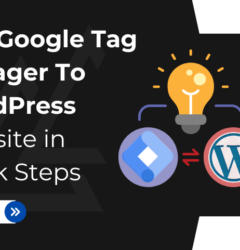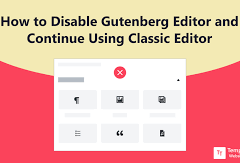09 Apr

In the current digital age, having an online presence is essential for businesses, and e-commerce platforms are a great way to reach a worldwide audience. It turns out that WordPress is the best option to build free ecommerce website. Using WordPress, the industry-leading content management system, this tutorial walks you through the process of creating a free e-commerce website.
WordPress offers flexibility in both appearance and functionality thanks to its huge plugin ecosystem and diversity. Using e-commerce-specific professional WordPress themes and plugins, you may create a polished storefront without spending a lot of money. Because of WordPress’s user-friendly interface, even those with little technical knowledge may effectively develop and operate an online business. WordPress gives you the ability to build a strong online store, regardless of Whether you’re a small business owner or an aspiring entrepreneur, WordPress gives you the ability to build a strong online presence without breaking the bank. By utilising WordPress’s capabilities for your online store, you can unleash the potential of your business.
What to Add in an Ecommerce Website?
It’s important to list the necessary elements for your e-commerce website before you start developing it. Product listings are one of these components; they are the centre of your online store and showcase your products in an easy-to-navigate format. A strong shopping cart system is essential for providing customers with smooth shopping experiences. It lets them add the things they want and easily check out. By incorporating secured payment channels, you can give your customers confidence and peace of mind about the security of their transactions. Furthermore, a visually appealing design is essential for drawing in people and presenting your products in an effective manner. Aim for an intuitive user interface that facilitates exploration and improves navigation. These core elements can help you build an engaging online shopping destination that encourages interaction and increases customer satisfaction with your e-commerce website.
Why Choose WordPress as Your eCommerce Platform?
WordPress stands out as an ideal choice for your ecommerce platform due to its versatility and user-friendly nature. Renowned for its intuitive interface and vast customization capabilities, WordPress empowers users to create tailored online stores that align with their unique vision and requirements. At the heart of WordPress’s ecommerce capabilities lies WooCommerce, a robust plugin seamlessly integrating with your website to furnish essential features for online product sales. Moreover, WordPress’s open-source nature fosters a thriving community, resulting in an abundance of free themes and plugins that cater to various ecommerce needs. This accessibility makes WordPress a cost-effective option for establishing and managing your ecommerce venture. With its combination of flexibility, functionality, and affordability, WordPress emerges as a top contender for businesses seeking to embark on their ecommerce journey with confidence and ease.
Steps to Build Free Ecommerce Website:
1. Choose an Attractive Store Name:
Selecting a catchy and memorable name for your online store is crucial. It should reflect your brand identity and resonate with your target audience. Consider incorporating keywords related to your products or services while ensuring the name is easy to remember and spell. A unique and engaging store name can leave a lasting impression and attract potential customers to your ecommerce venture.
2. Sign Up for a Hosting Provider:
There are several free web hosting providers available, including Hostinger, Wix, and 000webhost. Choose one that meets your needs in terms of storage, bandwidth, and other features.
a) Hostinger:
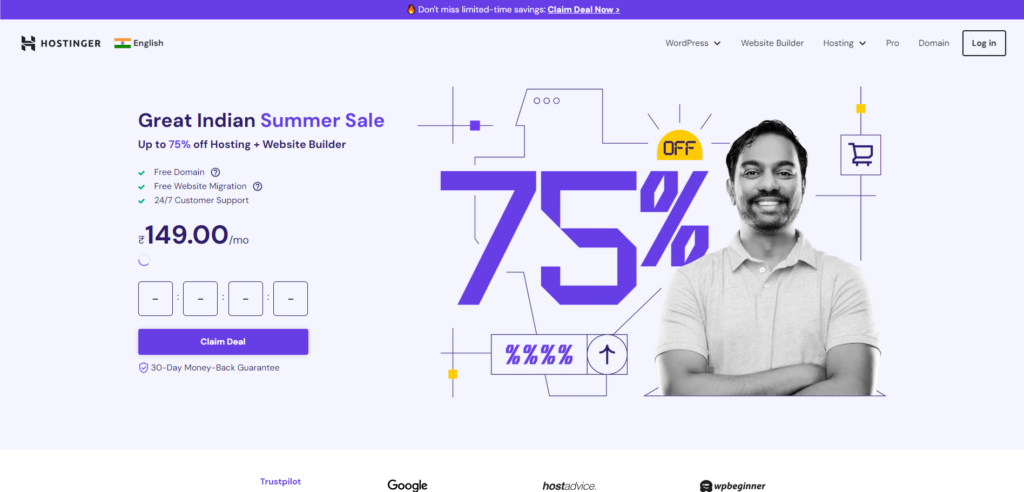
Hostinger is a leading web hosting provider renowned for its reliable services, affordable pricing, and user-friendly platform. With a global presence spanning over 170 countries, Hostinger offers a range of hosting solutions tailored to meet the needs of individuals, businesses, and developers alike. Whether you’re launching a personal blog, an ecommerce website, or a complex web application, Hostinger provides the tools and support to help you succeed online. Their intuitive control panel makes managing your hosting account effortless, while features like one-click installations, free SSL certificates, and automated backups streamline the setup process and enhance website security. With 24/7 customer support and a commitment to innovation, Hostinger empowers users to unleash their creativity and achieve their online goals efficiently and affordably.
b) Wix:

Wix is a versatile and popular platform to build free ecommerce website that empowers users to create stunning websites with ease, regardless of their technical expertise. Offering a range of customizable templates for various industries and purposes, Wix provides the flexibility to design unique and visually appealing websites that reflect individual style and brand identity. With its intuitive drag-and-drop interface, users can effortlessly add elements, customize layouts, and incorporate advanced features such as e-commerce functionality, blogging tools, and multimedia integration. Wix also boasts powerful SEO tools to help improve website visibility and attract more visitors. Additionally, Wix offers reliable hosting services, ensuring fast loading times and seamless performance for websites of all sizes. Whether you’re a small business owner, entrepreneur, or creative professional, Wix provides the tools and support needed to bring your online vision to life effectively and efficiently.
c) 000webhost:
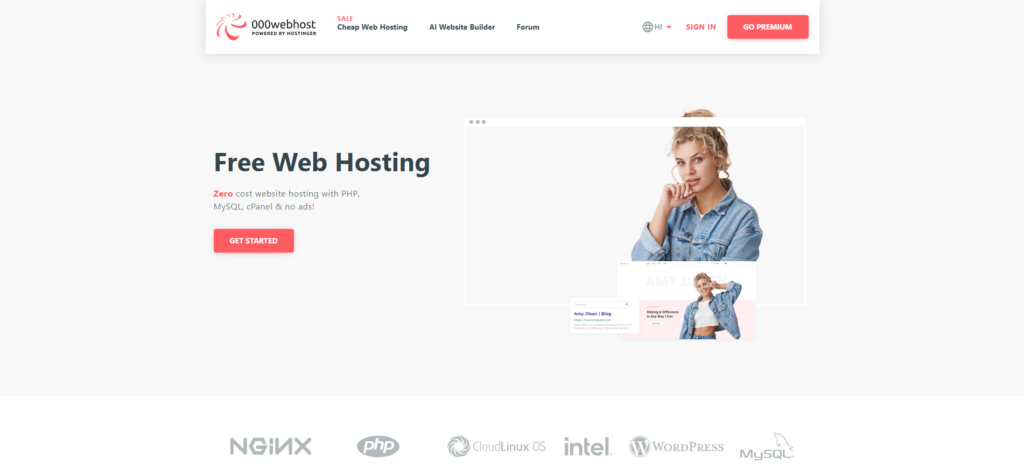
000webhost is a free web hosting platform that offers users the opportunity to create and host websites without incurring any costs. Despite being a free service, 000webhost provides reliable hosting solutions with a range of features to suit various needs. Users can easily build websites using the platform’s intuitive website builder, which offers customizable templates and a user-friendly drag-and-drop interface. Additionally, 000webhost supports popular content management systems like WordPress, Joomla, and Drupal, allowing for greater flexibility and customization options.
With 99% uptime guarantee and fast loading speeds, websites hosted on 000webhost enjoy a reliable and seamless browsing experience. While the free plan comes with certain limitations, such as limited disk space and bandwidth, 000webhost offers affordable premium plans with additional features and resources for users who require more advanced functionalities. Overall, 000webhost is an excellent option for individuals and small businesses looking to establish a web presence without breaking the bank. Build free ecommerce website now!
3. Install WordPress:
Installing WordPress is a straightforward process that can be completed in just a few steps:
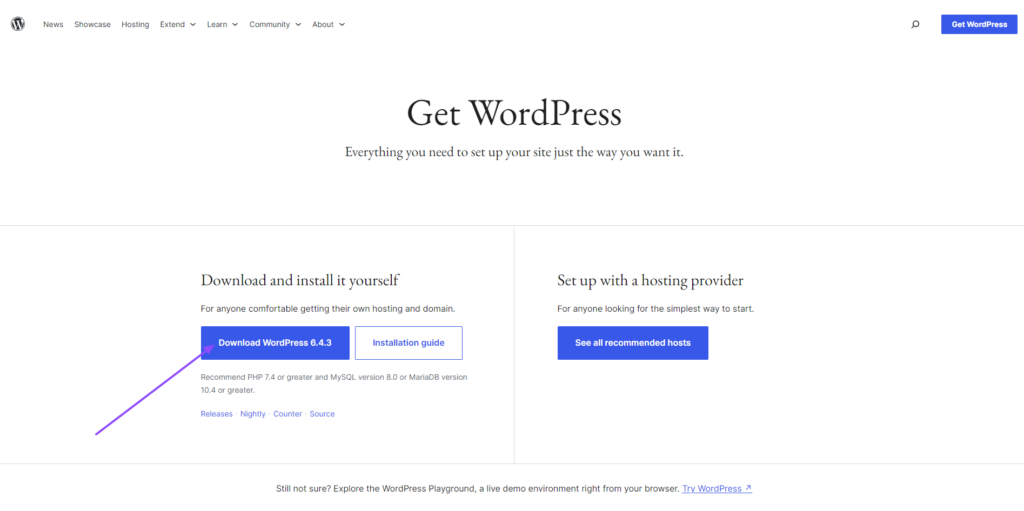
1) Choose a Web Hosting Provider: Select a reliable web hosting provider that meets your needs and budget. Ensure the hosting plan you choose meets the requirements for running WordPress.
2) Create a WordPress Database: Log in to your web hosting account and access your control panel (cPanel). Navigate to the MySQL Database section and create a new database for WordPress. Take note of the database name, username, and password.
3) Download and Install WordPress: Download the latest version of WordPress from the official website. Upload the WordPress files to your web server using an FTP client or the file manager in cPanel. Once uploaded, extract the files and navigate to your website’s URL in a web browser.
4) Complete the Installation Process: Follow the on-screen instructions to complete the WordPress installation. You’ll need to enter the database information you created earlier, including the database name, username, password, and host.
5) Set Up Your WordPress Website: After the installation is complete, you can log in to the WordPress dashboard using the admin credentials you specified during the installation process. From here, you can customize your website’s appearance, install themes and plugins, create pages and posts, and start building your online presence.
Following these five simple steps will have your WordPress website up and running in no time, ready for you to start creating content and engaging with your audience.
4. Install and Configure WooCommerce:
Installing and configuring WooCommerce, the popular e-commerce plugin for WordPress to build free ecommerce website, involves several straightforward steps:
1) Install WooCommerce Plugin:
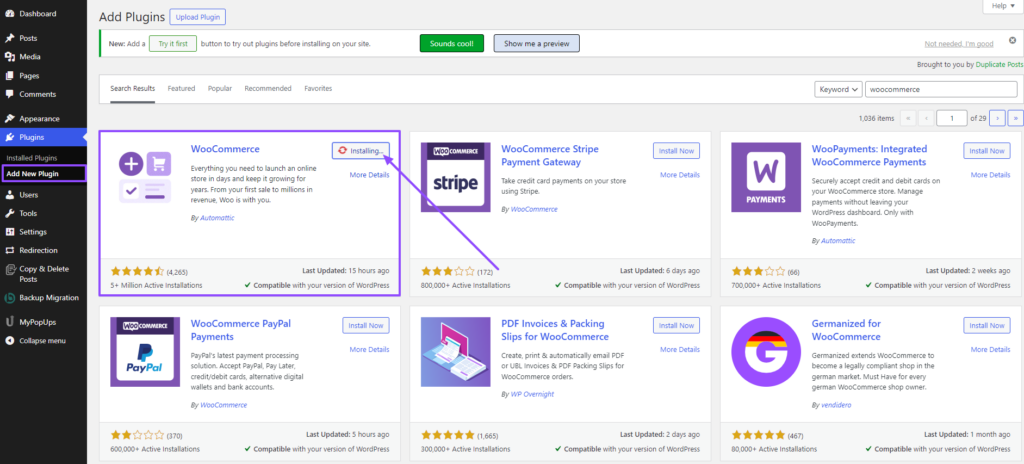
- Log in to your WordPress admin dashboard.
- Navigate to Plugins > Add New.
- Search for “WooCommerce” in the search bar.
- Click on the “Install Now” button next to the WooCommerce plugin.
- Once installed, click on the “Activate” button to activate the plugin.
2) Setup WooCommerce Wizard:
- Upon activation, WooCommerce will prompt you to run the setup wizard.
- Click on the “Run the Setup Wizard” button.
- Follow the on-screen instructions to configure basic settings such as currency, store location, shipping, tax, and payment methods.
- You can also skip the setup wizard and configure settings manually later.
3) Configure General Settings:
- Navigate to WooCommerce > Settings.
- Review and configure general settings such as currency, selling locations, shipping, tax, and checkout options according to your store’s requirements.
- Save changes after configuring each section.
4) Add Products:
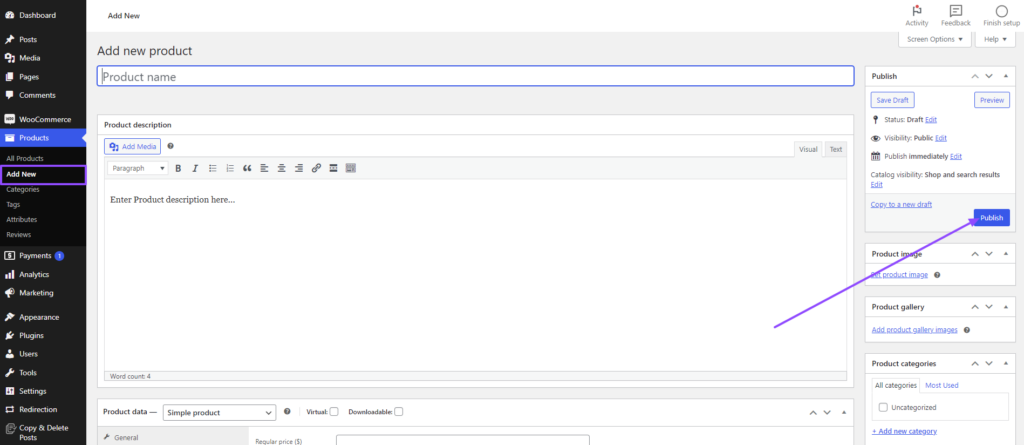
- To add products, navigate to Products > Add New.
- Enter the product title, description, price, and other relevant details.
- Set product categories and tags for better organization.
- Upload product images and set featured images.
- Configure product variations, if applicable (e.g., size, color).
- Click on the “Publish” button to make the product live on your store.
5) Customize Store Appearance:
- Customize your store’s appearance by choosing a suitable theme or modifying the existing one.
- You can access themes under Appearance > Themes and customize them further under Appearance > Customize.
- Consider installing additional plugins or extensions to add functionality or enhance your store’s design to build free ecommerce website effectively.
6) Test and Launch Your Store:
- Before launching your store, thoroughly test the purchasing process to ensure everything works as expected.
- Make a test purchase to verify that payment gateways, shipping methods, and order processing are functioning correctly.
- Once you’re satisfied with the setup and testing, you can officially launch your WooCommerce store and start selling products.
By following these steps, you can successfully install and configure WooCommerce on your WordPress website, enabling you to create a fully functional online store and start selling products or services to your customers.
5. Choose a Free Responsive eCommerce Store Theme:
Browse through the free themes available in the Ovation Themes and select a responsive ecommerce theme that suits your brand aesthetic and provides a seamless user experience across devices.
a) Free Shopkeeper WordPress Theme:

The Free Shopkeeper WordPress Theme by Ovation Themes is a versatile and user-friendly solution for creating stunning online stores without the burden of cost. Designed to cater to the needs of ecommerce businesses, this theme offers a plethora of features to showcase products effectively and facilitate seamless transactions. With its clean and modern design, coupled with intuitive customization options, users can effortlessly personalize their online store to reflect their brand identity.
The theme is fully responsive, ensuring that the website looks impeccable on all devices, from desktops to smartphones. Whether you’re selling physical products, digital downloads, or services, this theme provides a professional and engaging platform to showcase your offerings. Plus, with Ovation Themes’ commitment to quality and customer satisfaction, users can trust in the reliability and performance of their online store. Elevate your online venture with the Free Ecommerce WordPress Theme by Ovation Themes and embark on a journey to build free ecommerce website.
Try the premium version of Shopkeeper WordPress theme, it provides premium features with sleek design. the theme is compatible with various plugins, provides cross-browser compatibility and what not. If you are building an effective online presence then this theme is a must.
6. Install Additional Plugins:
Enhance the functionality of your ecommerce website by installing additional plugins for features such as SEO optimization, social media integration, and analytics tracking.
7. Configure Your Payment Methods:
Set up secure payment gateways such as PayPal, Stripe, or Square to enable customers to make purchases on your website securely.
8. Add & Upload Products:
Here are the steps to add and upload products effectively:
- Access your WordPress admin dashboard by navigating to your website’s URL followed by “/wp-admin”.
- In the WordPress admin menu, hover over or click on “Products” to reveal the dropdown menu.
- Click on “Add New” to create a new product listing.
- Fill in the product details, including the product name, description, and short description.
- Specify the product price, regular price, and sale price (if applicable).
- Assign the product to one or more categories to organize your inventory effectively.
- Add product tags to improve searchability and categorization.
- Scroll down to the “Product Image” section and click on “Set product image” to upload the main product image.
- Optionally, add additional images to showcase the product from different angles or in various contexts.
- Set product data such as SKU (Stock Keeping Unit), product weight, dimensions, and inventory status (in stock/out of stock).
- Configure product variations if your product comes in different sizes, colors, or other options.
- Set stock status and manage inventory quantities to ensure accurate tracking of available stock.
- Enable stock management to receive notifications when stock levels are low.
- Define product attributes such as size, color, material, etc., if applicable.
- Configure attribute terms and assign them to the product variations.
- Provide a brief product summary in the short description field.
- Fill in any additional information such as product specifications, features, or usage instructions in the “Additional Information” tab.
- Preview the product listing to ensure everything looks as expected.
- Click on the “Publish” button to make the product live on your ecommerce store.
- Repeat the above steps for each product you want to add to your store.
Take the Necessary Steps to Grow Your eCommerce Store:
After you’ve completed to build free ecommerce website, now it’s time grow your business online. Follow the below steps to do so –
- Implement SEO Strategies: Enhance your website’s visibility in search engine results by optimizing product descriptions, meta tags, and content with relevant keywords. Utilize tools like Google Analytics and Search Console to monitor performance and make data-driven decisions.
- Content Marketing: Develop a content strategy to engage and attract customers. Create blog posts, videos, and infographics that provide value to your audience while subtly promoting your products or services.
- Social Media Marketing: Leverage popular social media platforms to reach potential customers. Share engaging content, run targeted ads, and engage with your audience to build a loyal following and drive traffic to your website.
- Email Marketing: Build an email list and send regular newsletters, promotions, and personalized offers to your subscribers. Use automation tools to segment your audience and deliver relevant content that converts.
- Customer Retention: Focus on retaining existing customers by offering excellent customer service, loyalty programs, and incentives for repeat purchases. Encourage reviews and testimonials to build trust and credibility.
- Expand Product Range: Continuously evaluate market trends and customer feedback to identify opportunities for expanding your product range. Introduce new products or variations to attract a wider audience and increase sales.
- Optimize User Experience: Regularly test and optimize your website for speed, usability, and mobile responsiveness. Provide a seamless browsing and checkout experience to minimize bounce rates and maximize conversions.
- Monitor Competitors: Keep an eye on your competitors’ strategies, pricing, and product offerings. Identify areas where you can differentiate yourself and capitalize on market gaps to stay ahead of the competition.
- Analytics and Tracking: Monitor key performance indicators (KPIs) such as conversion rates, average order value, and customer acquisition cost. Use analytics data to identify areas for improvement and optimize your marketing efforts for maximum ROI.
Conclusion:
In conclusion, the process to build free ecommerce website with WordPress opens up a world of opportunities for businesses to establish a powerful online presence without the hefty price tag. By following the steps outlined in this guide, entrepreneurs can create a professional and visually appealing online store that showcases their products effectively and attracts customers from around the globe. WordPress, with its user-friendly interface and extensive customization options, provides a solid foundation for building and managing an ecommerce website seamlessly.
Try leveraging our WordPress Bundle, it comprise of array of themes that are woocommerce compatible and are best choice in the market. These themes excel the marketplace in demand and affordability. If you are just a beginner and want to spend less, try our bundle which is worth buying. Get your bundle now!
From choosing an attractive store name to configuring payment methods and adding products, each step is carefully designed to ensure a smooth and hassle-free website development process. With the right strategies in place, such as driving traffic, optimizing for search engines, and delivering excellent customer service, businesses can grow their ecommerce store and unlock its full potential in the competitive online marketplace. Embrace the power of WordPress and embark on the journey to ecommerce success today.

